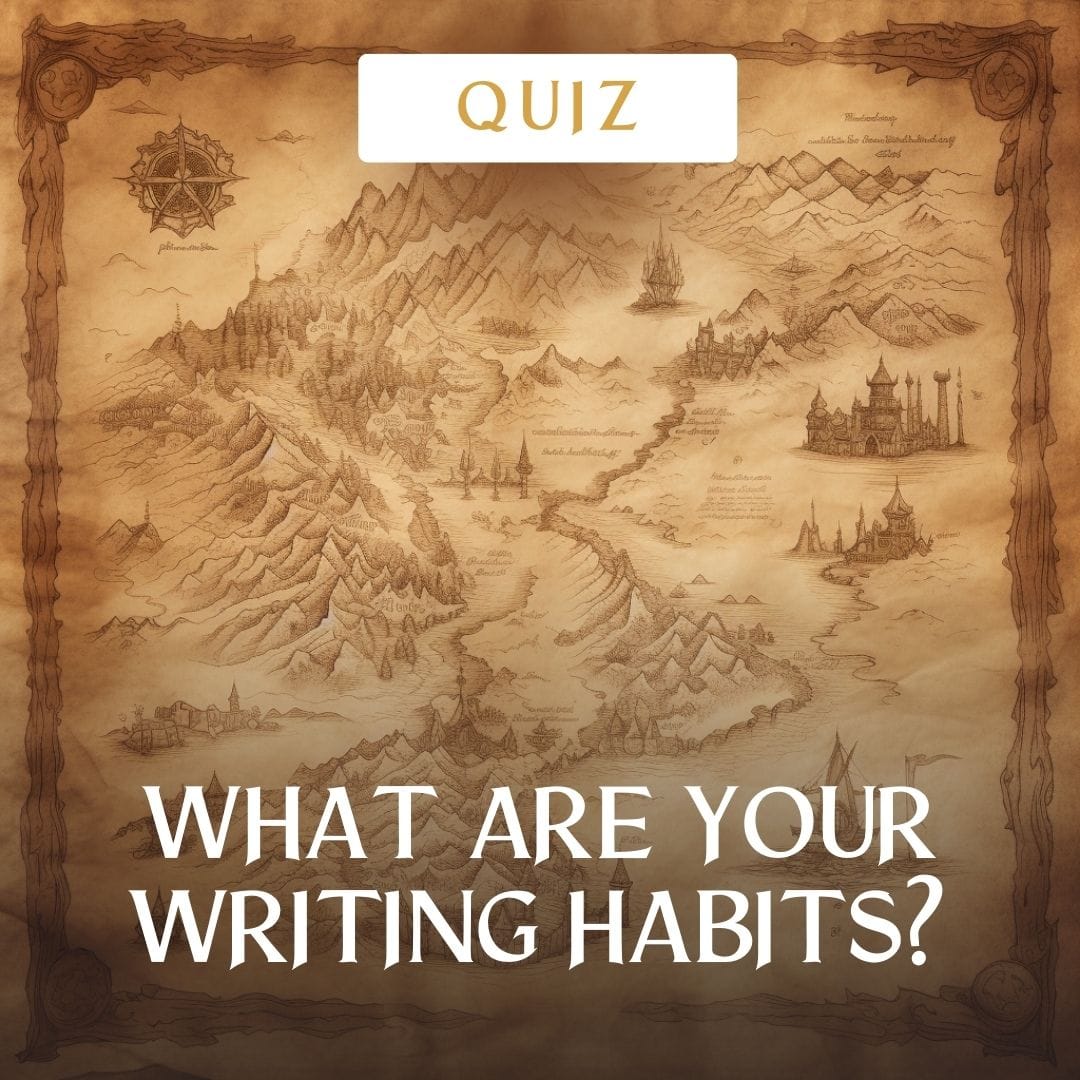Plenty of Christ-centered writers strive to create allegories of what we believe, to translate the ideas of faith into the drama of a story. But that comes with difficulty. Here’s a question from our community:
“I’m worried in my more allegorical work that I may misrepresent the nature of God through in accurate or misleading analogies. I think I just need to write first and trust in God to guide me, but yeah the theological consistency of my work makes me anxious sometimes.”
First of all, good for you friend. It’s good that you’re plowing ahead and trying to keep figuring it out.
So here’s a couple of thoughts, and then we’ll end with a practical tip you might not have expected.
The difficulty of allegory
Allegories can be tough. Not even Narnia is a one-to-one allegory, even though it’s stacked with allegorical ideas. And even those start to have a hard time once you put them under theological scrutiny.
But that’s the point of an allegory. Within a fixed frame of reference, it makes sense. Like St Patrick grabbing a three-leaf clover to talk about the Trinity. Theologians today love ripping into the technical inaccuracy of that. But it was a metaphor for a time and a people that helped.
Allegories aren’t perfect. They invite someone to tilt their head sideways and look at something from a different angle, or a new point of view.
When you expand that into a story, the allegory then becomes deeper, like worldbuilding, and you have to start taking seriously (or having more fun with) the ramifications of the allegory.
Almost everyone wants to re-imagine the heroic lovegift of Golgotha in their stories, either as a god-hero, or a main character. But the truth is always so dense and so interconnected, that it’s hard to feel like you’re getting it all.
“Simply put, most modern Christian allegories are terrible. Somewhere along the road, it seems that Christian writers began to believe that traditional rules of writing compelling, three-dimensional characters and subtle, non-preachy themes don’t apply to allegories. As a result, most modern allegories I’ve read follow the same blatant retelling of the Gospel story centered around a conversion narrative with flat characters and a predictable storyline. Bonus points if Christ literally shows up in the story or it’s set in a generic fantasy environment.” – KingdomPen
My advice? Don’t try to get it all. Just share the idea, and accept that it has its limitations.
You know what also has limitations?
Your limits as a creator
You and I do, friend. :) We are usually stuck with the cards life dealt us at birth. Nature, nurture, and choice bring us to where we are today, and that trio of reality informs the way we see truth.
Truth is real, sure. But how we see it, and how we think about it, and how we express it, will usually be limited. Sometimes flawed. That’s why we ask truth to reveal itself to us. Or, to be more appropriate, Himself. Truth is Christ. It’s not something we wrestle with our minds and haul it into the light of our attention. Sometimes it deliberately holds back in the darkness, beyond our reach, waiting for us to be silent and open to receive it.
Several times I’ve simply asked my guardian angel to help me understand an idea, and a thought just appeared inbetween washing a plate and a cup. Sometimes truth, or our effort to perceive Christ in something, takes time to reveal.
As a creator, we realize we are really sub-creators. We’re remixing together the glib, gorgeous, and grittiness of reality. We don’t actually create from scratch – only one person can ever do that. What we bring to the realm of storytelling is our own ability to see, our sense of feeling, and our groundedness in a time and place.
In a piece of literature or work of art, the words or visual objects are never really the things themselves, but instead are representations of something else. – What is an Allegory
Storytellers are translators of reality, turning it into captivating, dramatic moments.
But that then means something else.
Storytellers are not theologians
Sure, some are, and they like to write carefully accurate content. But most of us are creators.
It’s really important that we don’t try to write evangelistic literature, or apologetical drama. If that’s your jam, go for it. But don’t expect it to be widely enjoyed as fiction.
The point of fiction is something deeper. Fiction is not about sharing the answer. It’s about dramatizing the question. It’s about following a character through thick and thin, through the sick and sin of their choices, slowly being changed from a flawed wannabe into a more real person.
And most stories are set against a background of worldbuilding and ideas. If you’re Christian, you might dip into the heroics and histories of our Christian past and our mythic religious realities. Stories are a fantastic way to turn our heads over and see things from a different point of view.
That’s our call as authors, to have new points of view. Those only come from spending plenty of time having our own adventures. Filling ourselves on plenty of ideas, plenty of strange experiences, meeting plenty of people. We are like wine presses, taking in a variety of sticks, leaves, and clusters of grapes, and filtering it into something unusual and delicious that people want to come back to again and again.
But there’s not guarantee that we’ll get it right. In fact, the world is thick with stories packed with thin theology. Most authors just swap out names and try to keep the underlying truth, without having really understood it themselves.
This is why, for me, some of C.S. Lewis’ novels like ‘Till We Have Faces’ or ‘Perelandra’ are so eerie and wonderful, because they’re deeply reflective of allegory and theology, but at the same time, very focused on the central message of the story.
Since each character must represent a part of your theme, this affects how and why you introduce a character or figure. When reading an allegory, your audience expects to interpret the whole story and find meaning behind each character, action, and motive. You can’t have an inconsequential, drop-in character who provides comedic relief. Each one represents something or someone else. – ProWritingAid
And that’s the tip to leave with you:
You don’t have to get it right
A story is not a blog post. If you were creating an elaborate allegory and posting it on your blog, it’s pretty obvious that you’re telling people what you think.
But if you turn that allegorical idea into a scenario, and make characters wrestle and adventure with it, you’ve introduced a new layer.
A layer of misunderstanding, of mistakes, and misapprehension.
The Lord of the Flies explores what happens when a group of boys is stranded on an island with no adults. As they strive to set up some sense of society, they realize that they also have a strong pull towards transforming into savages. This is the main allegory of this book, that every human person has an impulse both towards civilization and savagery. – 15 Allegory Examples
There’s no guarantee that your character has actually understood what they’ve learned. There’s no guarantee that the religion that’s taught in the book is actually correct on every point. Our church today struggles with this same thing – that’s why we’re in a vast period of renewal since Vatican II.
Perhaps the allegory you’re in love with only works up to a point, or perhaps you’re afraid you’ll get it wrong.
Well, stick that landing. Think of storytelling as active contemplation through narrative. You’re sitting down and seriously focusing on an idea, and making people live through what it feels like to take that allegory seriously.
Maybe, by ‘playing’ with the idea, you’ll find that it doesn’t work. Or maybe it works just well enough for the sake of the story.
Just think about Narnia. Or Planet of the Apes. Or Lord of the Flies. Or Animal Farm. Or Inside Out.
So if you’re worried about theological consistency in your work, you may need to dive deep into more theology. When you’re not writing, pull up YouTube University and keep going on rabbit holes. Watch debates and discussions from several points of view. Fill yourself with as much accuracy as you can – while remembering something important.
Choose to be open to these truths. If they stay up in the top left corner of your body, locked down in your analytical brain, they won’t do you much good. Or your readers.
Truth needs to move into the creative side of the mind, swell out into the heart, flow into choices and moments and inform daily living.
Headtrips don’t get us to Heaven. Living out truth invites the presence of Christ.
And Christ is Heaven. All the way to Heaven is Heaven.
So don’t be afraid.
Keep writing.
Let your characters make the mistakes – because plenty of people will have mistaken views and initially agree with your characters. That’s why we, as authors, like to throw books at things.
Throw the book at your characters. Write without expecting it to be perfect. Just learn the craft of writing.
And keep having fun.
Check out the ‘How to be a Faith-Inspired Fiction Author‘ series of posts.
What would you add to this?
Keep the conversation going in the comments!




0 Comments